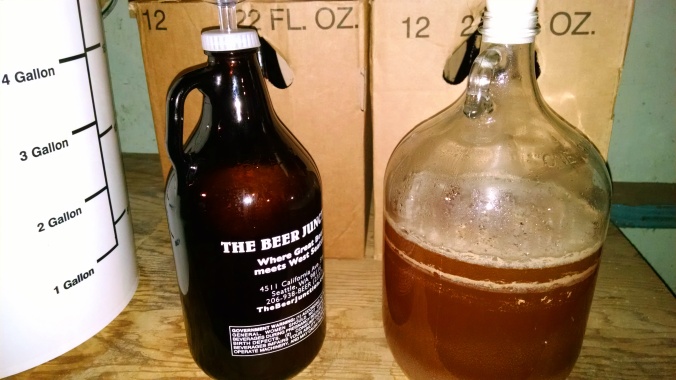What those who state “I’ll keep buying Elysian as long as quality doesn’t suffer” don’t realize is how detrimental the acquisition of “craft” breweries by the big boys (AB INBEV, SABMiller, etc.) really is to your local and regional “craft” beer scene.
First of all, perhaps you aren’t aware of it, but AB INBEV owns their own distributorship (these are the companies that get the beer you love to drink to your local watering hole, bottleshop, etc.). They have a lot of money, power, and influence in what beers from their portfolio saturate your market. What they like to do to independent companies who are solely signed to their distributing arm is push them out of the market if they refuse to be bought up (see the recent examples of Firestone Walker and Ninkasi). This isn’t just bad for those wonderful independent brands, but it’s also bad for your other favorite labels who are signed to smaller distributors because AB INBEV has the ability to buy up shelf space from them at your local grocery store. Okay, so you’ll just shop at your super craft-dedicated uber local bottleshop and to hell with it, right? Not quite. Many fans of craft beer aren’t lucky enough to live in areas of concentrated craft offerings, and many cities aren’t considered to be craft beer meccas like those that pepper the country.
Regardless, this acquisition (and those of Goose Island & 10 Barrel) should trouble a true fan of independent craft breweries on a more personal level. I assume you are advocates of craft beer because of the quality of the product and the wonderful gastronomic and sensory experiences those beers provide you with. Many small and independent breweries make it their mission to cater to those exact expectations. Lest you forget, AB INBEV doesn’t give a damn about those expectations; their eye is on their bottom line. This isn’t to say independent breweries don’t also factor the business aspects of their industry into their products, prices, processes, etc., they do; however, once AB INBEV feels their pocket book is getting a little light, I can guarantee you they will cut costs anywhere they can — be that in quality ingredients or in their labor force. So while some of you may be correct that the quality of GI and 10BBL products have not yet suffered, it is very early in the game to make such statements while turning a blind eye to these other acquisition issues.
Oh, just like their ability to squeeze out independent breweries from the market, AB INBEV likes to buy up more ingredients (hops, malts) than they need to create an artificial deficit which means your favorite brewery might be forced to change your favorite recipe because they cannot obtain their usual ingredients. This also forces ingredient prices to rise, which will be felt by the consumer down the line as your favorite brewery is forced to raise it’s prices.
I could go on indefinitely, but I’m probably just preaching to those same people who are satisfied with a Starbucks on every corner. So make no mistake this acquisition is corporate American all the way and it will have ramifications that many of you may not have considered. I’d much rather see larger craft breweries follow in New Belgium’s footsteps and become employee owned entities. I’m lucky enough to live in Seattle, which means I still have plenty of local, independent options for delightful craft brews.
You can be sure I’ll be supporting those guys, because just as Elysian Brewing once said on the label to their Loser Pale Ale: Corporate Beer Still Sucks!



